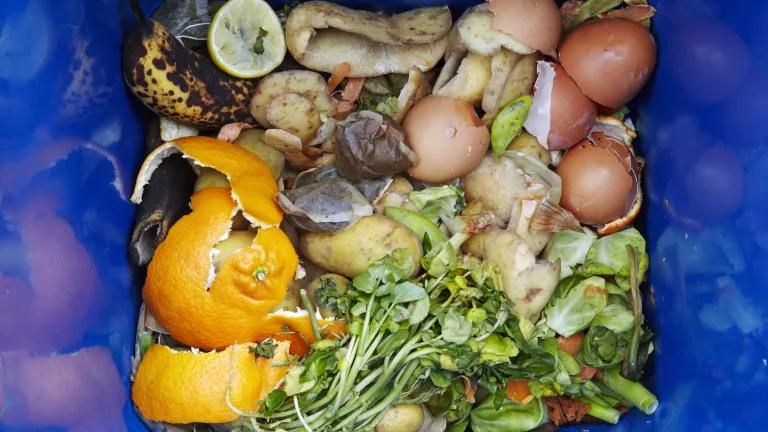
You know that bunch of bananas you picked up at the supermarket last week? They are equal to about half the entire number of bananas the Food and Drug Administration tests for potentially dangerous levels of pesticide residues every year.
That’s right. The agency tasked with keeping contaminated produce from entering the country only tests about a dozen whole bananas (including the peel) a year. The US Department of Agriculture, in contrast, tested 10,000 peeled bananas in one year and found residues of illegal pesticides on 2.15 percent, yet the USDA doesn’t have the authority to ban tainted imports. That’s the FDA’s job, but since it doesn’t do enough testing, unsafe pesticide residues can end up on our family’s plates.
The FDA’s laissez-faire approach to pesticide contamination is not an isolated case. The latest edition of NRDC’s OnEarth Magazine features an exposé by Barry Estabrook revealing the agency’s chronic failure to protect Americans. From Salmonella in eggs to mercury in high fructose corn syrup, the agency has missed serious health hazards because it doesn’t look closely for them. This “see no evil” style of risk management leaves the American people to suffer the consequences. And as Estabrook writes, those consequences can be deadly.
And yet the FDA continues to rely on old testing programs and reject new safety assessment practices that have become routine in other agencies and institutions. Lawmakers and public health experts have said for years that the FDA is struggling under the weight of its mission. In 2007, an independent review by science advisors concluded, “FDA’s inability to keep up with scientific advances means that American lives are at risk.”
This risk starts with the food we eat. The FDA tests only 0.00002 percent of fruits and vegetables for pesticide residues—roughly equivalent to testing the meal of one family while ignoring the meals eaten by 5 million other families—and only looks for a fraction of the toxic pesticides used on produce. Last winter, the agency’s regular food monitoring programs failed to detect an illegal fungicide in imported orange juice. It wasn’t until the FDA was notified by juice producers that the agency even knew there was a problem and had to scramble to restrict the contaminated juice.
Likewise, the agency doesn’t do wide-ranging assessments for chemical contamination of seafood, despite the prevalence of mercury, hormones, antibiotics, and other toxins in the fish people commonly eat. Mercury is of special concern. It is a potent neurotoxin that can impair children’s ability to think and learn. In adults, it can cause memory loss, tremors, and numbness of the fingers and toes. It can also adversely affect fertility and blood pressure regulation.
Fish is the primary pathway for mercury exposure. Coal-fired power plants release mercury into the air and much of it get deposited in waterways, where fish absorb it. When we eat the fish, we absorb it too. This pollution is so ubiquitous that all 50 states advise people to avoid eating fish from contaminated waters. Yet the FDA’s doesn’t have a comprehensive program for detecting mercury in the fish for sale on grocery shelves. A few years ago, reporters from the New York Times sent sushi samples from restaurants and stores to be assessed in a lab. These independent tests detected much higher levels of mercury than those reported by the FDA.
When the agency downplays threats like these, it often contradicts scientific and health experts. Time and again, FDA policies don’t reflect the weight of evidence—the consensus in the scientific literature and amongst public health experts about specific toxicants.
The FDA allows the use of lindane in shampoos to treat lice, for instance, even though it is a DDT-related pesticide banned by the EPA and being phased-out around the world by international treaty. Just last week, the agency ignored the clear science and denied NRDC’s 2010 petition to put a stop to the use of lindane. And in evaluating the safety of seafood in from the Gulf of Mexico after the BP oil spill disaster, the agency underestimated the risk from naphthalene because it didn’t recognize it as a carcinogen, despite the fact that an authoritative body on carcinogens, the National Toxicology Program, does.
The trouble with ignoring the evidence and hoping for the best is that it turns Americans into guinea pigs. We only realize something is bad for us when we become sick. It is time for the watchdog supposedly guarding our health take off the blinders.



